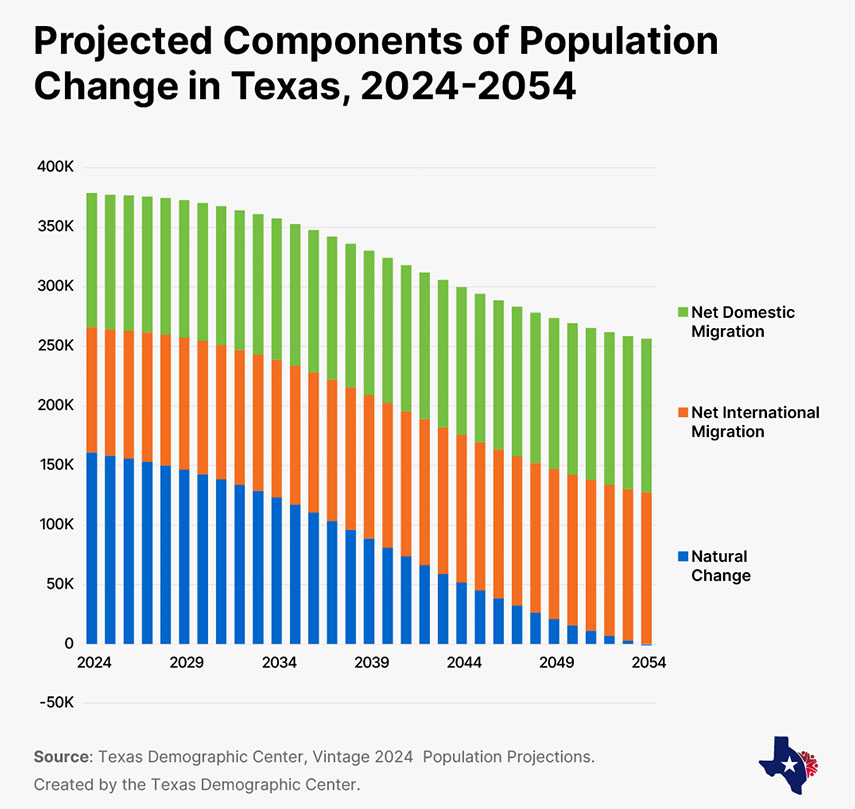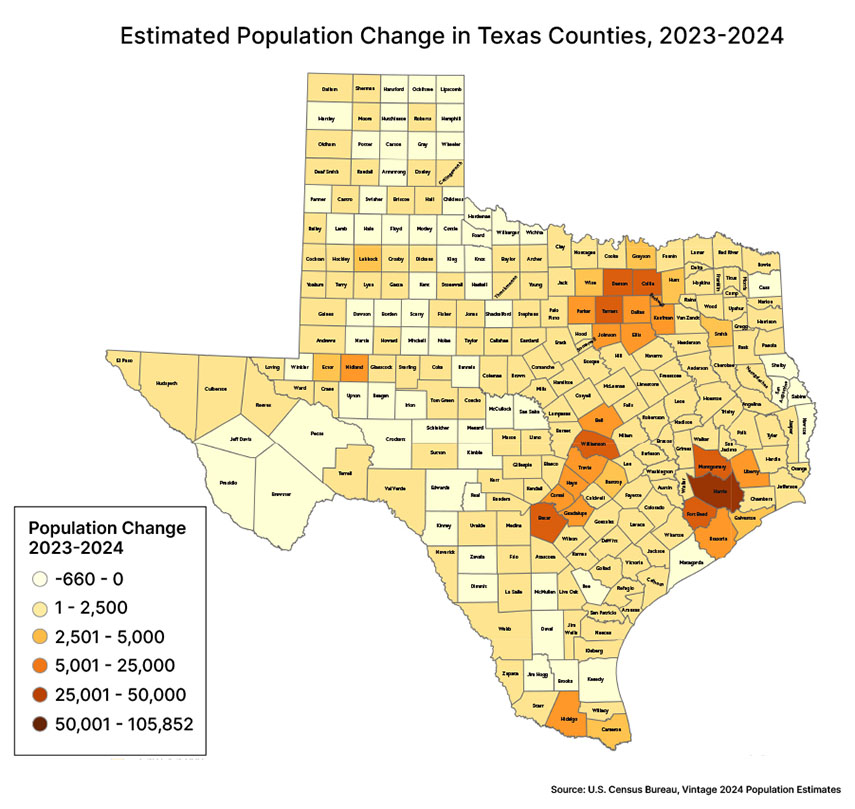Next month’s Texas Demographic Conference is poised to shed light on current and anticipated population changes in Texas, which has experienced some of the fastest growth in the nation over the past decade.
The Texas Demographic Center (TDC), a state agency housed within the UTSA Institute for Demographic and Socioeconomic Research, will host the conference and play a leading role, sharing its biennial Center Vintage 2024 projections. This report predicts the state’s residential population by age, sex, race and ethnicity for each year from 2020 through 2060 in several migration scenarios. The team estimates that the population of Texas could grow from roughly 31 million to 46.2 million by 2060 in a high-migration scenario or 40.3 million if migration is low.
Texas grew more than any other state in 2024 and saw a 38.5% increase in population size between 2003 and 2023.

According to the TDC, this population growth has been largely due to migration. In San Antonio alone, 35,000 of the 47,000 newcomers between the summers of 2023 and 2024 moved from other states or countries while the remainder of the growth was due to natural population change (births minus deaths).
Texas State Demographer Lloyd Potter, a UTSA professor of sociology and demography, says that there are several demographic trends in Texas that state agencies and policymakers should recognize.
One key shift underway is the slowing of immigration, particularly refugees, also referred to in population reports as humanitarian immigrants.
“Last year was the first year we saw more than half of our state’s population growth come from international migration,” Potter said. “In ’24-’25, population growth is likely to still be high, but by ’25-’26, we’ll start seeing the effects of the borders being shut down. We think that downward trend will likely continue for the next few years.”
Potter added that natural population change is unlikely to offset this trend.

“We’re seeing a decline in birth rates, and baby boomers are aging into high mortality,” he said. The TDC reported that between 2023 and 2024, nearly 57% of population growth in Texas was accounted for by international migration.
Potter also underscored the shifting ethnic makeup of Texas, noting that “the non-Hispanic White population is going to decline as we move away from the baby boomer generation; birth rates in this demographic are low.”
Meanwhile, demographic groups spurring population growth through both births and migration are largely Hispanic, Asian and mixed-race, a group that was previously underreported due to the constrictions of the census survey and lack of heritage awareness.
“People are identifying themselves more complexly, in part due to ancestral research,” Potter said. “The Census now makes it easier for people to identify as more than one race.”
One main theme of the conference will be the impact on infrastructure. Attendees will hail from a range of state agencies and local government boards to gather data to aid in planning for population booms across the state.

According to Potter, this is particularly relevant in residential counties surrounding major cities, also called suburban ring counties.
“When you see the tremendous growth we’re experiencing, especially in suburban ring counties like Comal County, every one of those people that move there will need a new housing unit. That leads to a spike in demand for housing, but also for electricity and water,” Potter said. “And water is one of the biggest challenges facing Texas.”
The TDC works closely with agencies such as the Texas Department of Transportation and the Texas Water Development Board to ensure that infrastructure such as public transportation and roads are developed to support rapidly growing communities in Texas.
“Some roads were built maybe 20 years ago and need to be expanded. We also need to anticipate the growing demand for power, retail and industry,” Potter added.
The Texas Demographic Conference will take place on May 21–22 in Dallas and will be livestreamed for participants to join virtually. The agenda will include a presentation from Potter on the TDC’s latest projects as well as a talk by Pia Orrenius, a labor economist at the Federal Reserve Bank of Dallas, about the Texas economy.
The conference will also explore issues like natural resource planning and management, special populations and workforce development.



